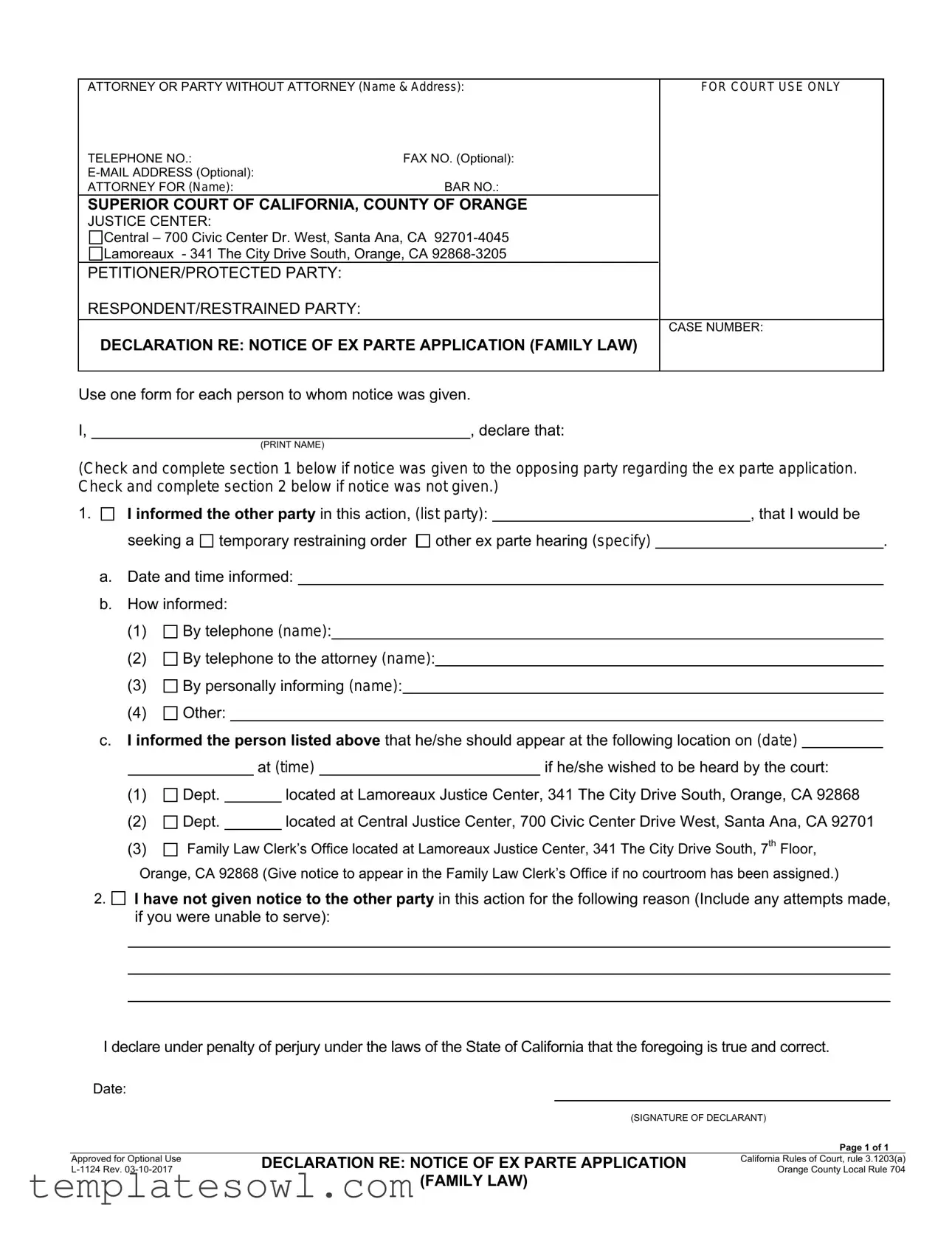What is the JDF 208 form used for?
The JDF 208 form, known as the Declaration Re: Notice of Ex Parte Application (Family Law), is intended for individuals seeking a temporary restraining order or other immediate court orders in family law cases. It serves to inform the court of notice given to the opposing party about the ex parte hearing and outlines the details of that notice.
Who must complete the JDF 208 form?
Both attorneys and individuals representing themselves in court must complete the JDF 208 form if they are applying for an ex parte order. Each person to whom notice was given needs to fill out their own form. This ensures that the court is aware of all notifications made regarding the pending application.
What are the notice requirements for ex parte applications?
For most ex parte applications, notice must be given by telephone or in writing. This communication should reach the other party no later than 10:00 a.m. on the court day before the ex parte hearing. In cases involving domestic violence, the notice must be provided at least four hours prior to the hearing. A formal request to waive the notice can be included in the JDF 208 form, if good cause is demonstrated.
What details need to be included in the notice?
The notice must include several key pieces of information: a statement of the relief being requested, an indication that the opposing party is entitled to attend the hearing, and the specific court location where the application will be presented. If the case is not assigned to a specific judge, the notice should instruct the opposing party to appear at the Family Law Clerk’s Office at the Lamoreaux Justice Center.
Can notice be waived when filing the JDF 208?
Yes, notice can be waived under certain circumstances. If a party provides a declaration under penalty of perjury outlining good cause for not providing notice, a judicial officer may grant a waiver. This declaration must be included with the JDF 208 form when submitted to the court.
Where are the court locations mentioned in the JDF 208 form?
The two primary court locations specified for filing ex parte applications are: the Lamoreaux Justice Center, located at 341 The City Drive South, Orange, CA 92868, and the Central Justice Center, situated at 700 Civic Center Drive West, Santa Ana, CA 92701. It's critical to use the correct location based on the status of the case.
What should be done after completing the JDF 208 form?
After completing the JDF 208 form, it must be filed with the appropriate court. Ensure that all details are accurate and that copies are made for all involved parties. Additionally, make sure that the notice has been served as required. This ensures that the hearing can proceed smoothly and effectively in front of the judicial officer.



 Central – 700 Civic Center Dr. West, Santa Ana, CA
Central – 700 Civic Center Dr. West, Santa Ana, CA 
 Lamoreaux - 341 The City Drive South, Orange, CA
Lamoreaux - 341 The City Drive South, Orange, CA  By telephone
By telephone  By telephone to the attorney
By telephone to the attorney  By personally informing
By personally informing  Other:
Other: Family Law Clerk’s Office located at Lamoreaux Justice Center, 341 The City Drive South, 7
Family Law Clerk’s Office located at Lamoreaux Justice Center, 341 The City Drive South, 7 I have not given notice to the other party
I have not given notice to the other party 